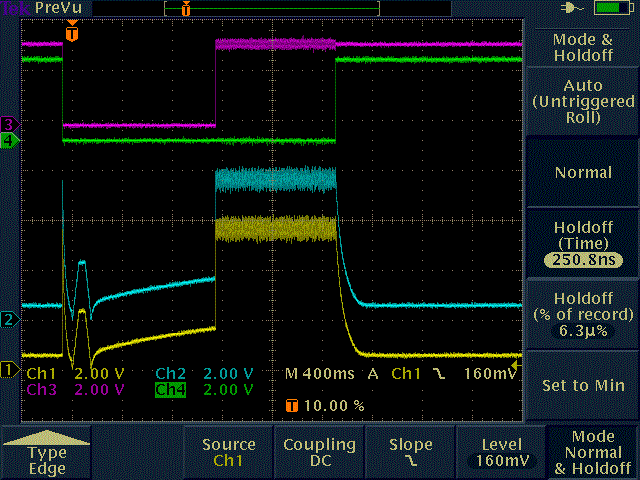Hi,
I have a couple of questions about the load diagnostics function in TAS5421.
1). is the MUTE signal recommended to be in any particular state during load diagnostics ?
2). in our application we de-assert MUTE and nSTANDBY simultaneously and we then see 2 cycles of load diagnostics waveform at the speaker connections (waveform as per fig 11 in the datasheet). It then takes approx 1sec before nFAULT de-asserts and audio is enabled. Is this correct ?
Our application is a warning system and waiting for 1sec after the last load diagnostic cycle is far too long. What can we do to reduce this time ?
regards
Nick


